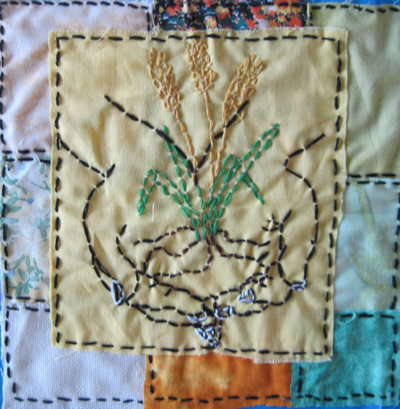Name2
Name3
Name4
World hunger is an obstacle that has faced humanity since day one. Currently every 3.6 seconds a person dies due to starvation (reference #1). A paucity of technology and education, bad economy and living conditions, and inability to accesses use of transportation and resources leave the 2/3s of our population not well fed. Though with advancements in agriculture beginning in the 1950s later known as the Green Revolution has allowed for better living conditions for people all around the globe. He did this by creating new farming methods including GMOs, initiating programs to teach farmers how to properly cultivate crops and constructing Norman Borlaug Institute for International Agriculture to support future research.
The Green Revolution was the transition in agriculture to new technologies and farming methods which increased plant yields, nutrition and environmental resistance. Scientist had formed numerous new practices to introduce a new age in farming, including pesticides, irrigation projects, nitrogen fertilizer and genetically modified crops. Pesticides are chemical substances that repels pests and bugs to prevent from loosing crops. Plant pesticides, used most commonly in its spray form started in green revolution. Another advancement was irrigation projects to provide water for soil along large farms, resulting in a lower work force and actual work to provide a higher yield. Primitive buckets were replaced by long pipelines providing plants with a constant supply of water. Nitrogen fertilizer was a huge factor in creating a healthier and higher yield of crop. Nitrogen fixation is the process in which micro-organisms convert nitrogen (N2) from the atmosphere is converted into Ammonia composed on nitrogen and hydrogen (NH3) that is used as nutrients for the plant. With new nitrogen fertilizer, ammonia and nitrogen are already placed in the soil to increase the rate of growth for a plant. What Borlaug is credited for most is for the creation of Genetically Modified Organisms (GMO), Borlaug and his team created a dwarf wheat for the Rockefeller Foundation that resisted a wide spectrum of plant pests, withstood harsh environments and produced a higher yield per acre. Using molecular genetics a mutant gene was created responsible for the process of stem growth; these genes were then cloned and inserted into new wheat. As a result wheat yield rose to provide and increasing amount of crops to people. These advancements together made wheat yield rise 2-3 fold in certain areas of the world.
After Borlaug's creation of GMOs, there was room for expansion in the future. Food demand would have to double by 2050 from when stated by Borlaug, which would require the further modification of foods such as increasing crop immunity, resistance, yield and land. As diseases evolve, crops are needed to be grown in new environments or need to become more nutritious and produce a higher yield; GMCs have the potential to solving these problems. All the progress made in genetic modified organisms is linked back to the early concept of manipulating genes in wheat and rice in Borlaug's lab.
Norman Borlaug's success is still felt today through many of the organizations that he created to help farmers learn and grow new forms of wheat. Norman Borlaug helped create the International Maize and Wheat Improvement Center which has helped develop shorter wheat varieties, which put more energy into grain production. The International Maize and Wheat Improvement Center (CIMMYT) brought these shorter wheat crops to countries like India , and in 1 year of working there, wheat production went from 11.3 million tons to 16.5 million tons of wheat the following year Borlaug's institute also worked in Mexico, Pakistan, Asia and Africa teaching farmers how to use new technology and providing them with GM crops.
Borlaug was able to increase of the welfare of every human on earth and save millions of lives from starvation by creating new advancements, building institutes to provide education and resources for farmers worldwide and also establish a foundation of science for future scientific research and discoveries. As a result of what Borlaug achieved, millions stand to gain from the benefits of conventional farming. Though even with the advancements made in agriculture during the green revolution, we will eventually reach a point were we cannot feed our population even with our greatly increased crop productions. Our population is expected to reach 9.0 billion by 2050, more than triple the population when Borlaug began his research. We now need to work on reducing our population to a suitable size, so one day we may live in the world that Norman Borlaug once envisioned.
